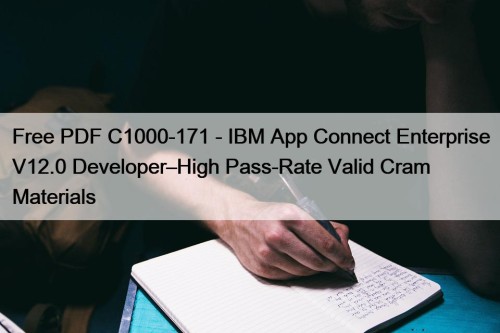Most Popular
 Free PDF C1000-171 - IBM App Connect Enterprise V12.0 Developer–High Pass-Rate Valid Cram Materials
Free PDF C1000-171 - IBM App Connect Enterprise V12.0 Developer–High Pass-Rate Valid Cram Materials
Our web-based practice exam software is an online version of ...
 Interesting Facts that Help you Crack the Tough VMware 2V0-13.24 Exam
Interesting Facts that Help you Crack the Tough VMware 2V0-13.24 Exam
As practice makes perfect, we offer three different formats of ...
 Get the Right Q&A in ACFE CFE Exam Questions
Get the Right Q&A in ACFE CFE Exam Questions
P.S. Free 2025 ACFE CFE dumps are available on Google ...



CCAK Test Voucher | CCAK Valid Test Fee

What's more, part of that Pass4cram CCAK dumps now are free: https://drive.google.com/open?id=1pGKF3AHtgMRE2aZlxxe2aHBuxeTbSo3y
The ISACA CCAK certification exam is one of the top-rated and valuable credentials in the ISACA world. This ISACA CCAK certification exam is designed to validate a candidate's skills and knowledge. With ISACA CCAK Certification Exam everyone can upgrade their expertise and knowledge level.
By earning the CCAK Certification, IT professionals can demonstrate their expertise in cloud auditing to employers, clients, and other stakeholders. This qualification is also a valuable asset for organizations seeking to build or expand their cloud auditing capabilities, as it provides a standardized framework for assessing the skills and knowledge of potential employees or service providers.
Quiz ISACA - CCAK - High-quality Certificate of Cloud Auditing Knowledge Test Voucher
We give priority to the user experiences and the clients’ feedback, CCAK practice guide will constantly improve our service and update the version to bring more conveniences to the clients and make them be satisfied. The clients’ satisfaction degrees about our CCAK training materials are our motive force source to keep forging ahead. Now you can have an understanding of our CCAK Guide materials. Every subtle change in the mainstream of the knowledge about the CCAK certification will be caught and we try our best to search the CCAK study materials resources available to us.
Why an Isaca CCAK Certification is useful to start your career?
In a highly competitive market, the job seeker must keep his/her skillset up to date. The demand for Information Technology professionals is soaring. The demand for professionals with cloud computing certifications is skyrocketing. The Isaca CCAK (Certificate of Cloud Auditing Knowledge) exam provides job seekers with an excellent opportunity to demonstrate their knowledge in cloud computing auditing. Job seekers who are trained on cloud security are more likely to be hired by companies that are seeking professionals who possess the ability to protect their data from adversaries. Smartphones times assess are prepared for the future of cloud security. The information security certificate is one of the most popular IT certifications in the world.
Isaca CCAK Dumps is certainly not a simple certification to acquire. But as long as you keep your focus, you will get there. There's a great need for trained professionals in the field of cloud security, and a growing number of businesses are making use of cloud computing services. In order to protect the integrity of an organization's data against cyber-attacks, organizations must deploy top-notch information security systems. A professional with a high level of understanding and knowledge about cloud security can make all the difference between success and failure.
ISACA Certificate of Cloud Auditing Knowledge Sample Questions (Q164-Q169):
NEW QUESTION # 164
Regarding suppliers of a cloud service provider, it is MOST important for the auditor to be aware that the:
- A. client organization and provider are both responsible for the provider's suppliers.
- B. suppliers are accountable for the provider's service that they are providing.
- C. client organization has a clear understanding of the provider s suppliers.
- D. client organization does not need to worry about the provider's suppliers, as this is the provider's responsibility.
Answer: C
Explanation:
Regarding suppliers of a cloud service provider, it is most important for the auditor to be aware that the client organization has a clear understanding of the provider's suppliers. This is because cloud services often involve multiple parties in the supply chain, such as cloud providers, sub-providers, brokers, carriers, and auditors. Each party may have different roles and responsibilities in delivering the cloud services and ensuring their quality, security, and compliance. Therefore, it is essential for the client organization to have visibility and assurance of the performance and compliance of the provider's suppliers and to establish clear and transparent agreements with them regarding their roles, responsibilities, expectations, and obligations.12 An auditor should be aware of the importance of the client organization's understanding of the provider's suppliers because it provides a basis for assessing the risks and challenges associated with outsourcing services to a cloud provider and its supply chain. An auditor can use the client organization's understanding of the provider's suppliers to verify that the client organization has conducted a thorough due diligence of the provider's suppliers and their capabilities, qualifications, certifications, and reputation. An auditor can also use the client organization's understanding of the provider's suppliers to evaluate whether the client organization has implemented adequate controls and processes to monitor, audit, or verify the security and compliance status of their cloud services and data across the supply chain. An auditor can also use the client organization's understanding of the provider's suppliers to identify any gaps or weaknesses in the client organization's security management program and to provide recommendations for improvement.34
NEW QUESTION # 165
Which of the following is the BEST tool to perform cloud security control audits?
- A. Cloud Security Alliance (CSA) Cloud Controls Matrix (CCM)
- B. ISO 27001
- C. Federal Information Processing Standard (FIPS) 140-2
- D. General Data Protection Regulation (GDPR)
Answer: A
Explanation:
The Cloud Security Alliance (CSA) Cloud Controls Matrix (CCM) is the best tool to perform cloud security control audits, as it is a comprehensive framework that provides organizations with a detailed understanding of security concepts and principles that are aligned to the cloud model. The CCM covers 16 domains of cloud security, such as data security, identity and access management, encryption and key management, incident response, and audit assurance and compliance. The CCM also maps to other standards, such as ISO 27001, NIST SP 800-53, PCI DSS, COBIT, and GDPR, to facilitate compliance and assurance activities1.
The General Data Protection Regulation (GDPR) is not a tool, but rather a regulation that aims to protect the personal data and privacy of individuals in the European Union (EU) and the European Economic Area (EEA). The GDPR imposes strict requirements on organizations that process personal data of individuals in these regions, such as obtaining consent, ensuring data security, reporting breaches, and respecting data subject rights. The GDPR is relevant for cloud security audits, but it is not a comprehensive framework that covers all aspects of cloud security2.
The Federal Information Processing Standard (FIPS) 140-2 is not a tool, but rather a standard that specifies the security requirements for cryptographic modules used by federal agencies and other organizations. The FIPS 140-2 defines four levels of security, from Level 1 (lowest) to Level 4 (highest), based on the design and implementation of the cryptographic module. The FIPS 140-2 is important for cloud security audits, especially for organizations that handle sensitive or classified information, but it is not a comprehensive framework that covers all aspects of cloud security3.
ISO 27001 is a standard that specifies the requirements for establishing, implementing, maintaining and continually improving an information security management system (ISMS). An ISMS is a systematic approach to managing information security risks and ensuring the confidentiality, integrity and availability of information assets. ISO 27001 is relevant for cloud security audits, as it provides a framework for assessing and improving the security posture of an organization. However, ISO 27001 does not provide specific guidance or controls for cloud services, which is why ISO 27017:2015 was developed as an extension to ISO 27001 for cloud services4. Reference := Cloud Controls Matrix | Cloud Security Alliance General Data Protection Regulation - Wikipedia FIPS PUB 140-2 - NIST ISO/IEC 27001:2013(en), Information technology ? Security techniques ...
NEW QUESTION # 166
Controls mapping found in the Scope Applicability column of the Cloud Controls Matrix (CCM) may help organizations to realize cost savings:
- A. by implementing layered security, thus reducing the likelihood of data breaches and the associated costs.
- B. by avoiding the need to hire a cloud security specialist to perform the periodic risk assessment exercise.
- C. by avoiding duplication of efforts in the compliance evaluation and for the eventual control design and implementation.
- D. by avoiding fines for breaching those regulations that impose a controls mapping in order to prove compliance
Answer: C
Explanation:
Controls mapping found in the Scope Applicability column of the Cloud Controls Matrix (CCM) may help organizations to realize cost savings by avoiding duplication of efforts in the compliance evaluation and for the eventual control design and implementation. The Scope Applicability column is a feature of the CCM that indicates which cloud model type (IaaS, PaaS, SaaS) or cloud environment (public, hybrid, private) a control applies to. This feature can help organizations to identify and select the most relevant and appropriate controls for their specific cloud scenario, as well as to map them to multiple industry-accepted security standards, regulations, and frameworks. By doing so, organizations can reduce the time, resources, and costs involved in achieving and maintaining compliance with various cloud security requirements123.
The other options are not directly related to the question. Option B, by implementing layered security, thus reducing the likelihood of data breaches and the associated costs, is not a valid reason because layered security is a general principle of defense in depth, not a specific feature of the CCM or the Scope Applicability column.
Option C, by avoiding the need to hire a cloud security specialist to perform the periodic risk assessment exercise, is not a valid reason because using the CCM or the Scope Applicability column does not eliminate the need for a cloud security specialist or a periodic risk assessment exercise, which are essential for ensuring the effectiveness and adequacy of the cloud security controls. Option D, by avoiding fines for breaching those regulations that impose a controls mapping in order to prove compliance, is not a valid reason because controls mapping is not a mandatory requirement for proving compliance, but a voluntary tool for facilitating compliance. References :=
* What is CAIQ? | CSA - Cloud Security Alliance1
* Understanding the Cloud Control Matrix | CloudBolt Software2
* Cloud Controls Matrix (CCM) - CSA
NEW QUESTION # 167
What aspect of Software as a Service (SaaS) functionality and operations would the cloud customer be responsible for and should be audited?
- A. Source code reviews
- B. Patching
- C. Access controls
- D. Vulnerability management
Answer: C
Explanation:
According to the cloud shared responsibility model, the cloud customer is responsible for managing the access controls for the SaaS functionality and operations, and this should be audited by the cloud auditor12.
Access controls are the mechanisms that restrict and regulate who can access and use the SaaS applications and data, and how they can do so. Access controls include identity and access management, authentication, authorization, encryption, logging, and monitoring. The cloud customer is responsible for defining and enforcing the access policies, roles, and permissions for the SaaS users, as well as ensuring that the access controls are aligned with the security and compliance requirements of the customer's business context12.
The other options are not the aspects of SaaS functionality and operations that the cloud customer is responsible for and should be audited. Option B is incorrect, as vulnerability management is the process of identifying, assessing, and mitigating the security weaknesses in the SaaS applications and infrastructure, and this is usually handled by the cloud service provider12. Option C is incorrect, as patching is the process of updating and fixing the SaaS applications and infrastructure to address security issues or improve performance, and this is also usually handled by the cloud service provider12. Option D is incorrect, as source code reviews are the process of examining and testing the SaaS applications' source code to detect errors or vulnerabilities, and this is also usually handled by the cloud service provider12. References:
* Shared responsibility in the cloud - Microsoft Azure
* The Customer's Responsibility in the Cloud Shared Responsibility Model - ISACA
NEW QUESTION # 168
What aspect of Software as a Service (SaaS) functionality and operations would the cloud customer be responsible for and should be audited?
- A. Source code reviews
- B. Patching
- C. Access controls
- D. Vulnerability management
Answer: C
Explanation:
According to the cloud shared responsibility model, the cloud customer is responsible for managing the access controls for the SaaS functionality and operations, and this should be audited by the cloud auditor12. Access controls are the mechanisms that restrict and regulate who can access and use the SaaS applications and data, and how they can do so. Access controls include identity and access management, authentication, authorization, encryption, logging, and monitoring. The cloud customer is responsible for defining and enforcing the access policies, roles, and permissions for the SaaS users, as well as ensuring that the access controls are aligned with the security and compliance requirements of the customer's business context12.
The other options are not the aspects of SaaS functionality and operations that the cloud customer is responsible for and should be audited. Option B is incorrect, as vulnerability management is the process of identifying, assessing, and mitigating the security weaknesses in the SaaS applications and infrastructure, and this is usually handled by the cloud service provider12. Option C is incorrect, as patching is the process of updating and fixing the SaaS applications and infrastructure to address security issues or improve performance, and this is also usually handled by the cloud service provider12. Option D is incorrect, as source code reviews are the process of examining and testing the SaaS applications' source code to detect errors or vulnerabilities, and this is also usually handled by the cloud service provider12. References:
* Shared responsibility in the cloud - Microsoft Azure
* The Customer's Responsibility in the Cloud Shared Responsibility Model - ISACA
NEW QUESTION # 169
......
CCAK Valid Test Fee: https://www.pass4cram.com/CCAK_free-download.html
- New Launch CCAK Exam Dumps 2025 - ISACA CCAK Questions 🛸 Search on ✔ www.exam4pdf.com ️✔️ for “ CCAK ” to obtain exam materials for free download 🏟CCAK Top Dumps
- 100% Pass Quiz ISACA - CCAK –Trustable Test Voucher 🧤 The page for free download of ▛ CCAK ▟ on ☀ www.pdfvce.com ️☀️ will open immediately 🔂Reliable CCAK Real Test
- Free PDF Quiz Efficient CCAK - Certificate of Cloud Auditing Knowledge Test Voucher 😚 Search for ▶ CCAK ◀ on ➠ www.real4dumps.com 🠰 immediately to obtain a free download 🏰Passing CCAK Score
- What Will be the Result of Preparing with ISACA CCAK Practice Questions? 🎵 Easily obtain free download of ☀ CCAK ️☀️ by searching on ⇛ www.pdfvce.com ⇚ 🧼Test CCAK Answers
- New CCAK Test Materials 🪒 New CCAK Test Materials 🔈 Answers CCAK Real Questions 🌰 Search for ➤ CCAK ⮘ and download exam materials for free through ( www.vceengine.com ) ⬇Test CCAK Guide Online
- Top CCAK Test Voucher | Efficient ISACA CCAK Valid Test Fee: Certificate of Cloud Auditing Knowledge 🌝 Open ⮆ www.pdfvce.com ⮄ enter ▷ CCAK ◁ and obtain a free download 🥈CCAK Reliable Study Questions
- Pass Guaranteed Quiz 2025 CCAK: Certificate of Cloud Auditing Knowledge Marvelous Test Voucher 🥃 Search for “ CCAK ” on [ www.real4dumps.com ] immediately to obtain a free download ⚽CCAK Valid Exam Review
- CCAK Latest Material 💧 Answers CCAK Real Questions 🛄 Braindumps CCAK Downloads 🎤 Search for ▛ CCAK ▟ and download it for free immediately on ( www.pdfvce.com ) 🌞New CCAK Braindumps Ebook
- Pass Guaranteed Quiz 2025 CCAK: Certificate of Cloud Auditing Knowledge Marvelous Test Voucher 🛌 ▷ www.prep4pass.com ◁ is best website to obtain ☀ CCAK ️☀️ for free download ⚗CCAK Top Dumps
- Test CCAK Answers 🏜 CCAK Reliable Study Plan 🆕 CCAK Latest Material 🚊 Search for ⏩ CCAK ⏪ and obtain a free download on 「 www.pdfvce.com 」 🦇CCAK Reliable Test Materials
- CCAK Reliable Study Questions 💇 New CCAK Practice Materials ❗ CCAK Reliable Study Plan 📒 Open ( www.dumpsquestion.com ) and search for { CCAK } to download exam materials for free 🔚Passing CCAK Score
- CCAK Exam Questions
- kursus.digilearn.my test-sida.noads.biz focusonpresent.com pensletech.com.ng www.watch.hyperwatching.com clonewebcourse.vip learn.infinicharm.com baxtondogtrainingacademy.com web.satyaka.com promarketingmedia.online
BTW, DOWNLOAD part of Pass4cram CCAK dumps from Cloud Storage: https://drive.google.com/open?id=1pGKF3AHtgMRE2aZlxxe2aHBuxeTbSo3y
Tags: CCAK Test Voucher, CCAK Valid Test Fee, Test CCAK Discount Voucher, Practical CCAK Information, CCAK Cert Guide